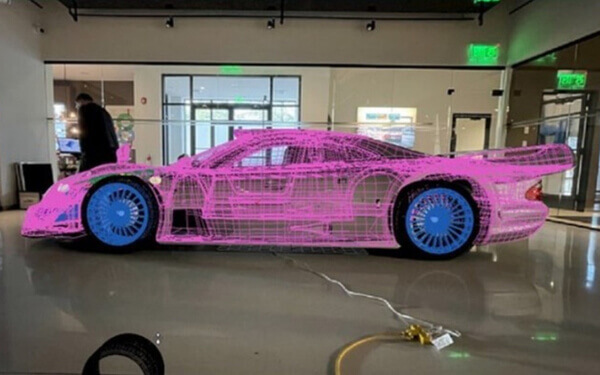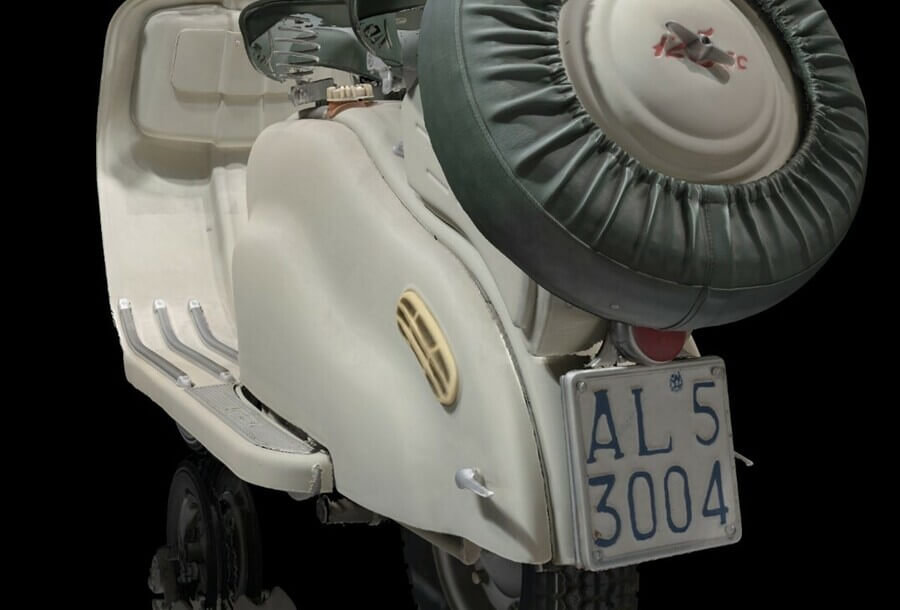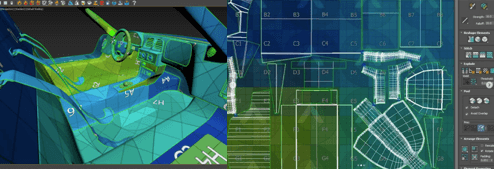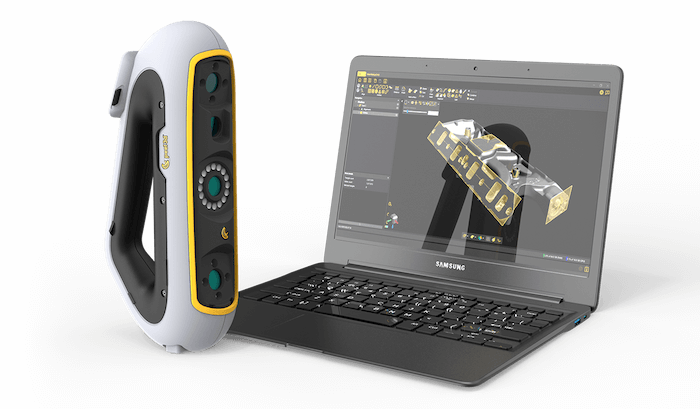Bridging the real and the virtual for the automotive aftermarket

Originally, Peel 3D democratized 3D scanning for reverse engineering in aftermarket garages. But in light of recent digital shifts to 3D, the scanners are put at work in new exciting ways.
There are virtual interactive 3D worlds under construction. They have been for a while.
In early 2000, major car manufacturers, such as General Motors, Scion and Nissan, were already opening dealerships in Second Life®, which was the test bed for many ideas coming to fruition today. At the time, Linden Labs investors, including Jeffrey P. Bezos and Pierre Omidyar, were already betting on the Internet, moving toward a three-dimensional experience that would become more realistic as technology advanced.
Now that reliable high-speed Internet, content management platforms, real-time gaming mechanics, and headsets are on their A-game to support the shift, there is no turning back.
This transition is fuelled by 3D assets creation—and both peel 3d and Creaform scanners speed up the process of bridging the real to the virtual. Accurately.
DIGITAL TWINS FOR UNIQUE CARS
The buzz around the Metaverse and NFTs has increased the demand for digital twins on custom and collectible cars. “I think people will find digital automotive assets as a valuable commodity that can be used in various ways,” says David Dimeola of Brigade, an American multi-disciplinary design studio based in New York. Among other things, his team is using the peel2CAD solution to help develop its own collection of rare cars to be accessed online with tokens. Their most recent project was to scan a Mercedes supercar with Additive Restoration, a company that reverse engineers and manufactures classic car parts using peel tools as well. That 3D model will be made available for purchase on Opensea with a link to unlock the vehicle on a 3D configurator.
In the making of custom cars and collectible digital twins, 3D scanners are essential for high-quality results.
“Using a scanner is so much better than any other form of measuring in respect to recreating a car,” says Dimeola. In that same spirit, Ivo Gaci, from X-engineering studios in Milan, explains: “It’s a different approach to make an NFT for a collectible car. I prefer 100% to work from scan data rather than build a model from scratch based on hand measures in these cases, from a precision and realism perspective.” Ivo and his team have used Creaform higher-end scanners for reverse engineering on vehicle parts and product design for years. Now, they are putting these high-precision tools to new uses.
And what happens after the scan? Retopology, UV unwrapping, rendering, minting. Although peel2CAD and some Creaform scanners can capture colour, Ivo’s team focuses solely on getting the best 3D models and accurate measurements. The pros figure out the realistic rendering to be applied on top of that model as a second and distinct step to meet higher-quality standards.
Interested in 3D scanning?
Contact our Peel 3D experts
A Vespa project from X-Engineering. The 3D model was generated with the HandySCAN Black.
The scan outputs need to go through some steps to become assets that will appeal to customers and be conducive to content management platforms and/or engines running virtual spaces, such as Unity or Unreal Engine. These steps are outside the traditional realm of skills within aftermarket shops, so service companies, including Brigade and X-Engineering, offer their support. There are also collaborative platforms, such as Montreal-based Artstation, where teams can discover complementary talents to collaborate with.
Retopology is, in most cases, the primary action on the list. A scan mesh consists of millions of points linked together like little triangles. A car features highly complex entities, and the resulting files need to be adjusted to meet computing and engine limitations—even more so if the asset is to be displayed in a real-time gaming setting. It’s about file size that allows for good FPS levels and not stretching computing and GPU too much. It also entails preparing the field for UV mapping and enabling the materials to react properly to the lightning of virtual environments. “The mesh can be worked on in any 3D application, Blender, Maya®, Cinema 4D, etc. From there, a modeller can generate poly models light enough to perform in the Metaverse. For example, The Sandbox,” says David for the Brigade.

From mesh to quads: Work from the Brigade for the Mercedes supercar project with additive restoration.
“Unwrapping UVs is critical to avoid tearing or deforming any textures applied to the 3D model parts. It’s important to achieve the same pixel density across multiple faces and objects to obtain a uniform resolution,” explains Dimeola.
And why not use photogrammetry data to lay these accurate 3D models on top to achieve super-realistic rendering? “We are using webGl to visualize the cars in real-time, and typically the photogrammetry data is heavy for this type of project and affects performance. We most importantly prefer to control every part in order to achieve a perfect look,” explains David. The object must be ray-tracing, global-illumination and reflection-friendly, depending on what you want to do with it. To keep all options open and cut down on required perfect capturing conditions set-up time for pictures, manual work is preferred over high-res photos use for this specific type of project. “Simply put, the photogrammetry workflow isn’t easy, and results depend on many factors. The environment is not always controllable, and lighting is crucial,” says Ivo for X-Engineering. He explains that the environment and boundary conditions have an important role in selecting the right way to go.

CLK unwrapping UVs for texturing on the Mercedes project.
PRODUCT RENDERING FOR MARKETING PURPOSES
Apart from digital collectibles, the rise of interactive virtual spaces brings new opportunities for aftermarket companies to market products and engage with clients in more ways. “Our first Metaverse project was a few weeks ago when we released our latest kit for a Mahindra Mojo motorcycle live at our workshop and simultaneously on the metaverse for people who couldn’t make it physically. The platform we used is a web-based platform called Frame that allows relatively easy entry for brands and people into the possibilities of the Metaverse,” says Mukul Nanda of Autologue Design. “Virtually experiencing products will become more and more mainstream for all kinds of products and services, especially the automotive scene. Virtual shopping experiences will be an alternative to the existing current ways of purchase, if not replace them completely.”

3D virtual showroom from Autologue Design on Frame platform for the launch of its Mahindra Mojo motorcycle kit.
A new generation of consumers and marketers who grew up with a joystick in their hands and are fluent in 3d is pushing in this direction. And as David Dimeola puts it: “Any brand that wants to represent its products within the meta space will need to digitize their product line and create a database of assets.” This is where peel and Creaform tools come in.
The automotive aftermarket industry is currently a $7 trillion industry. How much will this new realm of opportunities help push it further? The upcoming SEMA show in Vegas—one of the largest gatherings of automotive aftermarket suppliers, retailers, and professionals in the world—might be an excellent place to take the pulse on that in 2022.
Wonder how Peel 3D can transform your work, solve problems, and save you time?
Contact our Peel 3D expertsauthor
ABOVE MENTIONED PRODUCTS


